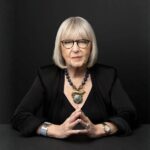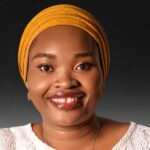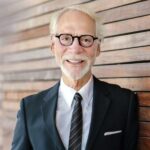Dr. Howard Woodruff stands in an unusual place in today’s healing landscape. While most practitioners firmly plant themselves in either the faith-based or psychological camps, he refuses to pick a side. Instead, he’s building bridges between two worlds that have spent decades treating each other like distant relatives at a family reunion.
“The artificial divide between spiritual and secular healing is hurting people,” says Woodruff, who developed his perspective not in a classroom, but in the trenches of human crisis. As a crisis chaplain at Ground Zero and during the Indian Ocean tsunami recovery, he witnessed firsthand how both prayer and psychology were essential tools in helping survivors rebuild their lives.
This dual perspective isn’t theoretical for Woodruff. After losing both his father and son, he found that neither traditional grief counseling nor pastoral care alone could address the full spectrum of his healing journey. The experience sparked what would become his life’s work: creating an integrated approach that honors both the spiritual and psychological dimensions of human resilience.
His Back to Abundancy™ process represents something rare in today’s polarized wellness industry. Rather than asking clients to choose between faith-based guidance and evidence-based psychology, Woodruff’s methodology weaves them together. Clients engage with grief recovery techniques that are both theologically grounded and psychologically sound, addressing trauma through a lens that sees humans as both spiritual beings and psychological entities.
This integration extends beyond personal coaching sessions. Through ReClaimed Living LLC, Woodruff is training a network of coaches who can operate fluently in both languages. “We’re not creating Christian therapists or therapists who happen to be Christian,” he explains. “We’re developing practitioners who understand that healing happens on multiple levels simultaneously.”
The approach challenges conventional boundaries in profound ways. Traditional psychological models often treat spiritual concerns as secondary, while faith-based counseling sometimes overlooks the neurological and behavioral aspects of trauma recovery. Woodruff’s framework suggests both approaches are incomplete when used in isolation.
His five-step Christian grief model, for instance, doesn’t replace the Kübler-Ross stages but offers a theologically informed alternative that addresses the same psychological milestones through a different lens. The result is a methodology that speaks to clients’ complete human experience rather than compartmentalizing their spiritual and emotional needs.
The timing couldn’t be more critical. Mental health awareness has reached unprecedented levels, yet many people feel caught between seeking help that aligns with their values and accessing effective treatment. Woodruff’s work suggests this tension is unnecessary and counterproductive.
His vision extends globally, with plans to establish coaching centers worldwide that operate from this integrated perspective. These won’t be faith-based organizations that dabble in psychology or psychological practices that accommodate religious clients. Instead, they’ll be healing environments where both dimensions are considered equally essential to human flourishing.
The resistance comes from predictable quarters. Some psychological professionals question the scientific rigor of faith-integrated approaches, while certain religious communities worry about diluting spiritual truth with secular methods. Woodruff navigates these concerns by demonstrating results rather than defending positions.
His clients report breakthrough moments that might not have been possible through single-approach methodologies. The woman processing divorce trauma who needed both cognitive behavioral techniques and spiritual meaning-making. The widower whose grief required both neurological understanding and theological hope.
What emerges from Woodruff’s work isn’t compromise but synthesis. He’s not watering down either tradition but creating something more robust by combining their strengths. In a world increasingly divided by false choices, his bridge-building offers a different path forward – one where healing doesn’t require abandoning essential parts of who we are.
The question isn’t whether faith and psychology can coexist in therapeutic settings. Woodruff is proving they can thrive together.
Disclaimer: The information provided in this article is for informational purposes only and should not be construed as professional medical or psychological advice. Dr. Howard Woodruff’s approach to integrating faith and psychology in healing is a personal perspective and methodology, which may not be suitable for everyone. Always seek the advice of your physician, therapist, or other qualified healthcare provider with any questions you may have regarding a medical or psychological condition. Healing methods discussed may vary depending on individual needs and circumstances.

















